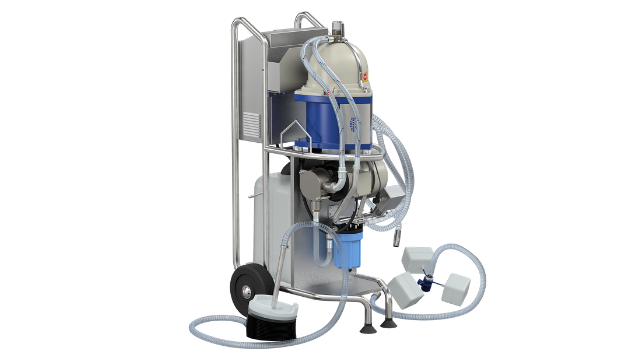Alfie
Alfie centrifugal separators remove the contaminating oil, grease and solid particles from coolants used in industry, helping prevent tool wear and avoid disposal problems.
Coolants are a major expense throughout metalworking industry, and replacing them once used is often messy and time-consuming. Disposing of used, contaminated coolants is also a continually escalating expense due to the need to comply with increasingly stringent environmental regulations.
Dirty coolants also result in substantial follow-on costs. Any tramp oil or solid particles present in a coolant can cause substantial wear on expensive tools and equipment, quality problems during subsequent processing and health problems for staff.
The Alfie range of compact high-speed centrifugal separators makes it easy to significantly reduce all such costs by keeping coolants clean, and do so in the most cost-effective way possible. Alfie units can be linked to a bypass flow, ensuring less downtime for service. In addition, fewer man-hours are required for maintaining service fluids. An Alfie separator plays a key role in ensuring longer tool service life and cleaner components, thus improving end-product quality.
The Alfie range currently consists of two different units. The Alfie 200 is designed for mounting on top of coolant tanks, and is fitted with a bellows that automatically adapts the inlet to the level of fluid in the tank.
The Alfie 500 is a compact, wheeled separator system that the operator can move from one tank to another. The PLC-based control system is easy to use, and special couplings make it easy to connect and disconnect the hoses quickly when moving the cleaning unit around.
Darbības pamatprincipi

In a centrifugal separator, the gravity that causes separation in traditional settling tanks is replaced with a centrifugal force that can be more than 5,000 times stronger. Naturally, this makes separation significantly faster and more efficient.
If buffer plates are added to a settling tank, the sinking of any particles stops sooner, and there is a greater surface area onto which they will fall, helping speed up the separation process. In a centrifugal separator, the same basic principle can be applied, and a corresponding increase in effectiveness achieved, by a stack of special discs.
The centrifugal force presses the heavy particles outwards against the walls of the separator, whereas any lighter particles present tend to follow the liquid phase towards the centre. The disc stack prevents them from doing so, however, making the lighter particles change direction and end up with the heavy particles close to the outer wall.
This makes centrifugal separators an effective way to remove particles as well as easily separating out different liquid components in the feed flow.

